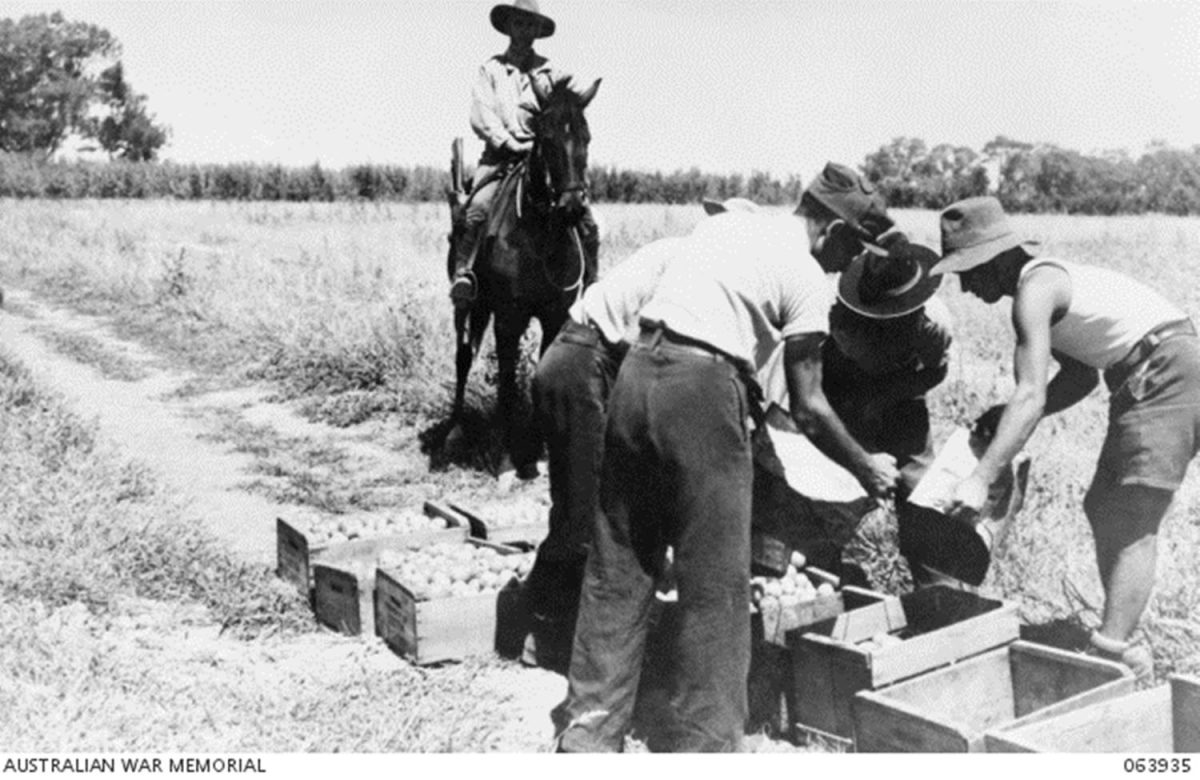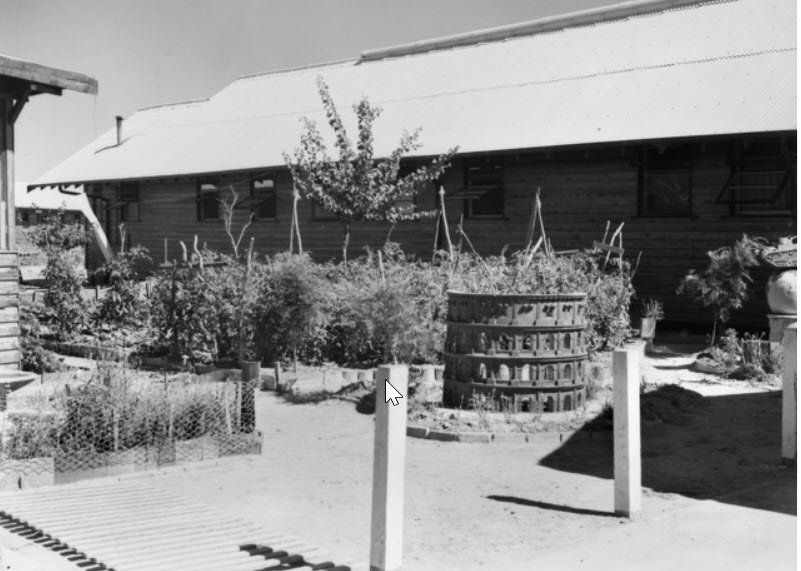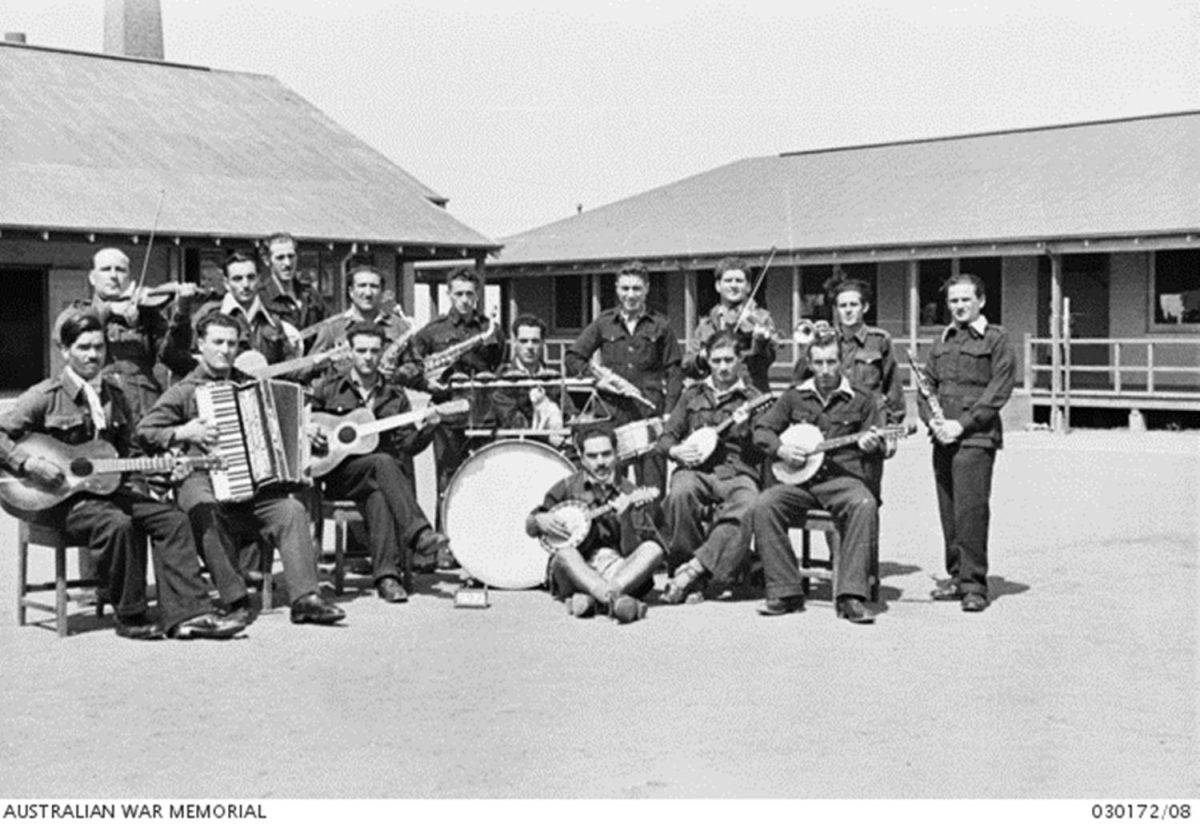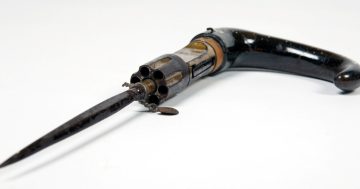
Italian POWs work to harvest onions at Yanco under the supervision of a mounted Australian soldier. Photo: AWM.
During the 1940s, the war arrived in the Riverina in the form of thousands of captured enemy soldiers that the Allied Forces leadership was keen to keep off the front lines in the Middle East, Europe and Asia.
More than 24,000 prisoners of war (POWs) were detained in camps across Australia along with around 12,000 internees comprised of Australian residents and foreign nationals deemed to be ‘enemy aliens’.
The largest camps in the Riverina were at Hay where 3000 Italians, Japanese and Germans were held across three compounds.
At Yanco, around 800 Italians were put to work on farms growing vegetables or cutting firewood with smaller numbers sent to Wagga Wagga, Tumut, Temora and West Wyalong where they laboured under minimal supervision.
A large number of civilian internees had been shipped out to Hay at the start of the war and their arrival had been largely welcomed by the local community where they established gardens, schools, workshops and music and sporting groups.
In the wake of Allied victories in the Middle East and North Africa, the situation changed as large numbers of foreign soldiers were sent southwest from Sydney on the railway.
“Prisoners Through Yanco, Captives from Middle East,” read a headline from the Murrumbidgee Irrigator in July 1941.
“Scenes similar to those witnessed earlier in the war at Yanco railway station, when thousands of civilian internees passed through on their way to the internment camp at Hay, were seen this week when heavily guarded carriages filled with prisoners of war from the Middle East theatre of fighting halted at the station.”
While the prisoners attracted great curiosity and suspicion, the Irrigator reflected on the positive contributions of the internees.
“The technical skill of some of the internees has been used to produce, in one instance, a complete set of dentist’s instruments, while expert woodcarvers made a crate of wooden toys, which was sent to the Mayoress of Hay for distribution among the poor children of the town last Christmas,” they reported.
“Artistic internees have turned their hands to efforts in many directions — one being the designing of posters, for Hay district patriotic efforts, which have been used for display in shop windows.”
They also established a newspaper and a bank and the reporter lamented the potential loss of income from the brisk trade that was being conducted between wealthy internees and locals.

POWs’ garden at Hay including a replica of the Colosseum. Photo: AWM.
It seems however that the foundations laid by the first internees were built upon and expanded by the shifting population of prisoners that would flow through the camps during the war.
A year later in 1942, the Newcastle Morning Herald and Miners’ Advocate reported that the information minister Bill Ashley had visited the Riverina and been duly impressed by the Hay facility.
“Although it is one of the largest internees’ camps in Australia, it is also a model one,” he said.
“Since it was opened, there have been no escapes or attempted escapes. All the prisoners are happy and contented.”
Italian prisoners at Hay famously built a miniature replica of the Colosseum in their veggie garden to convey a sense of their culture and civilization to their captors.
The camp at nearby Yanco was much smaller with a population of around 800 Italian POWs occupying the former Riverina Welfare Farm for Boys.
Detainees were permitted to bake their own bread and soon demonstrated their agricultural skills as reported in the Farmer and Settler in April 1944.
“In two years, the farm has become Australia’s greatest vegetable growing project – the biggest producer on the food front,” the story read.
“New methods of growing and harvesting have been introduced as well as new methods of seed production. At present more than 300 acres have been devoted to vegetables for seed purposes only.
“In the first year, using only prisoners of war labour more than 500 tons of tomatoes, silver beet, sweet corn, beans, cabbages, cauliflowers and sweet peppers (an American delicacy) were delivered to Leeton cannery.”

Members of the Italian prisoners of war band in Yanco in 1944. Photo: AWM.
While not everyone welcomed the influx of Italian workers, a move opposed by the unions and some farmers who described them as “brutes” and “fascists”, their legacy in the Riverina endures.
When the war came to an end in 1945, the Italian POWs were forced to remain for another year or more, stranded by shipping complications and a fraught political situation in their home country.
Many formed lasting friendships and connections to the Riverina and a significant number of former POWs returned to settle in Australia and to continue the work they had begun in the flourishing agricultural industry.








